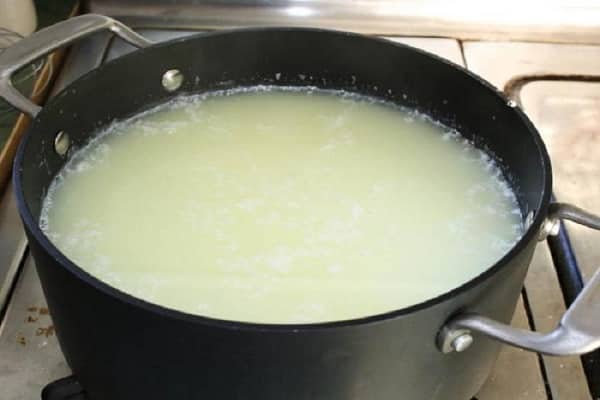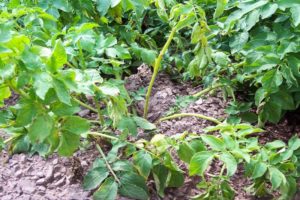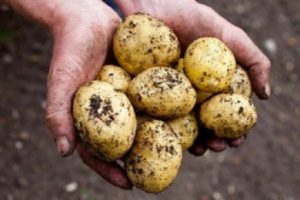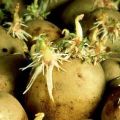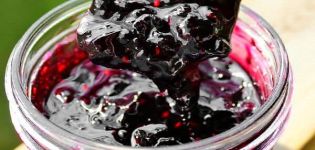The reason for the blackening of the tops of potatoes, and what to do?
Before digging out the crop, the tops of the potatoes turn yellow and dry out slightly. This is considered the norm, but if the tops of the potatoes have dried up and turned black, while the tubers are not yet ripe, in this case one can judge the disease that has arisen. Moreover, such changes occur unexpectedly, rather quickly.
Consider the main causes of blackening of the tops of potatoes and what to do to avoid or eliminate the problem.
The reasons
Everyone who grows potatoes has a primary goal of getting a healthy crop of tubers. And everyone tries to take care of them correctly, to huddle them in a timely manner, to remove weeds. How nice it is to admire your work when potatoes bloom white or purple flowers.

But it happens that, despite the efforts, black spots appear on the plant on days 2-3. The tops become black-yellow and gradually dry out. Less than half a week later, instead of lush potato bushes, bare, dry stems stick out.
Why do potato leaves turn black? This mainly happens if the plant has become infected with a fungal disease called late blight.
Those plants that are planted too close are especially quickly affected by this disease. As soon as spores fall on one plant, they are transferred to other leaves and stems due to wind, dew and rain. So a large area of potatoes is gradually affected by the disease.
Therefore, you need to know what control measures should be taken against late blight in order to protect your crop.

Most often, plants are exposed to this disease when the period of budding and flowering begins. Therefore, it is necessary to consider the condition of the potato leaves. Darkening of the lower ones is the beginning of late blight.
From the history of late blight
This disease began to manifest itself 200 years ago. It has a fungal nature, so it is difficult to fight with it. Late blight gradually affects the entire plant: at first it is found on the leaves, passes to the stem, flowers, and then interferes with the development of the root crop. Initially, it is noticed in the lower part in the form of a white bloom, then the tops become blackened and it dries.

The reason for the blackening of the tops of potatoes is most often cold, wet weather, with prolonged rains. After the top of the plant has dried, the tubers stop growing.
Other diseases
In addition to late blight, there are also diseases that lead to blackening of the tops and stems. Almost all of them are fungal in nature, they develop very quickly thanks to bacteria.
The tops of potatoes turned black if they were exposed to:
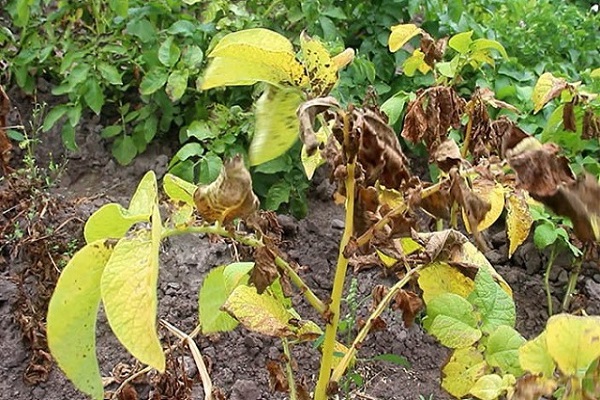
- alternaria;
- fusarium;
- rhizoctonia;
- black leg.
In some cases, improper care leads to blackening of potato tops - this is the soil in the form of clay, which retains moisture, as a result, the root part begins to rot. The reason is frequent heavy rains.
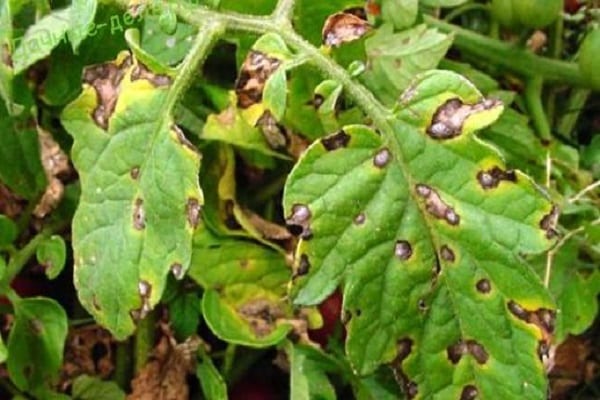
Control measures and prevention
The danger of the disease lies in the fact that it spreads very quickly, literally in a few days large areas are covered, the leaves on the potato darken, wither and dry very quickly. It is almost impossible to get rid of the disease and stop its spread.
What to do to prevent late blight?

Prevention must be followed potato diseases, namely:
- As soon as the buds begin to appear, it is necessary to process the tops by spraying the plants with a spray bottle. After 2 weeks, it is desirable to carry out the treatment again. If the weather is rainy and humid, a third treatment is required.
- Unfortunately, this fungal disease affects not only the ground part, but also the potato tubers. Due to rainfall, the spores of the fungus enter the tubers. When harvesting diseased plants, they must be completely removed from the field, otherwise, next year, fungal spores will persist and hit the next harvest.
The best prevention is to change the potato planting site every year.
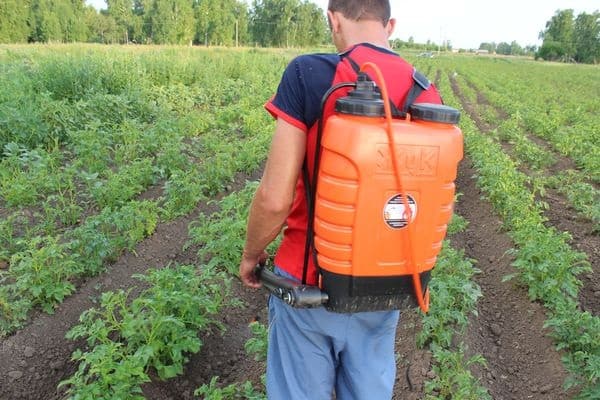
- Before harvesting, it is recommended to cut the affected stems with a sickle, dry them a little and burn them. They must not be placed in compost drums. First, it is advisable to treat the tubers with Prestige, which is an excellent prevention of fungal diseases.
- It is recommended to germinate the tubers. It is better to do this in the light, since you can see potatoes affected by late blight, remove diseased tubers. Black spots appear on diseased potatoes. Planting sprouting potatoes gives more guarantees in obtaining a healthy harvest, since it will have time to ripen much faster until autumn fogs and cold rains appear.
- In order for the soil to warm up faster in spring, it is better to cover the area under the potatoes with agrospan: that is, with a mulching material, black.
- You cannot plant tomatoes next to potatoes, because they belong to the nightshade family. Among their diseases is stem late blight. Tomatoes get sick, and then potato stalks and potato tops get infected as well.
- When harvesting, it is necessary to carefully sort out the tubers, because among them there are potatoes affected by the fungus. Potatoes must be dried in the sun, but do not put them in the cellar for storage for at least 2-3 weeks. Then once again sort out all the plants.

Features of choosing a potato variety
If late blight occurs very often, then it is recommended to find potato varieties that are least susceptible to this disease. But after a few years, the acquired variety is recommended to be renewed, because after a while its protection qualities are lost.
It is imperative to look for varieties with a record that it is least susceptible to late blight. But when buying seeds, it must be borne in mind that this variety is suitable for a given area and soil composition.

The following varieties are considered resistant to fungal diseases:
- Story.
- Sudarushka.
- Luck.
- Wizard.
- Laura.
- Blue.
When choosing a variety, you must always remember about this insidious potato disease, buy seeds taking into account resistance to diseases.
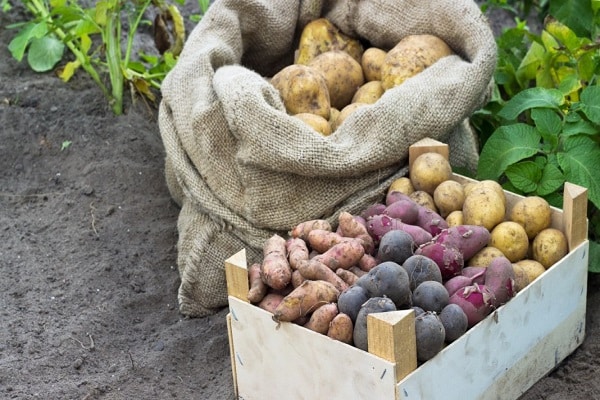
How and with what to spray potatoes?
For spraying, it is better to choose a dry sunny day. For this, morning or evening hours are suitable. It is advisable to familiarize yourself with the weather forecast for that day. Precipitation is undesirable at least 5–6 hours after treatment. After all, if you wash off the chemicals, then their protective properties weaken.
When processing, it is necessary to observe safety measures: dress correctly so that there is no contact of the chemical with human skin.
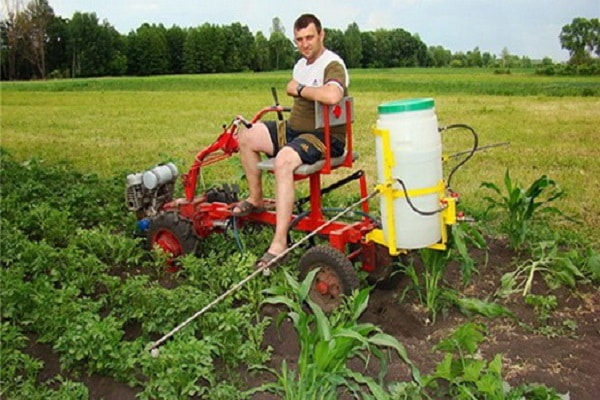
Chemicals
Of course, I want to choose the most effective and less toxic chemicals. For these purposes, Bordeaux liquid is most often used. It contains copper sulfate and lime.
They are diluted in water at the rate of half a glass of copper sulfate and the same amount of lime. They are added to a bucket of water and mixed thoroughly. With this liquid sprinkle potato tops.

The most commonly used prophylaxis drugs are:
- Agate.
- Hom.
- Maxim.
- Oxyhom.
- Fitosporin.
- Trichocin.
- Gamair.

But very often the duration of the action of fungicides is reduced by the rains, so plants have to be treated more often. But everyone who carries out the prevention of late blight should know that 15–20 days before harvesting, the processing of plants stops.
Traditional methods for processing
An excellent remedy for blackened foliage on potatoes is a tincture of garlic. You can make it like this: take about 100 g of garlic cloves, grind and add to a bucket of water. Insist for about 24 hours. In order for a film to form, rubbed laundry soap is added to the tincture. They wait for the soap to dissolve, then filter the infusion and use it to spray potato tops.
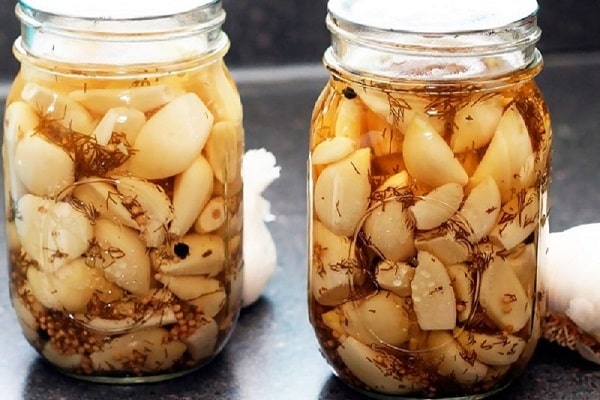
It is advisable to carry out this treatment every 2 weeks.
Folk effective remedies include milk whey, which is obtained after the preparation of cottage cheese. If late blight potato leaves are difficult to treat, then prevention is needed to protect your crop. And most importantly, the processing is recommended to be carried out in a timely and systematic manner, only then can healthy potatoes be grown.
